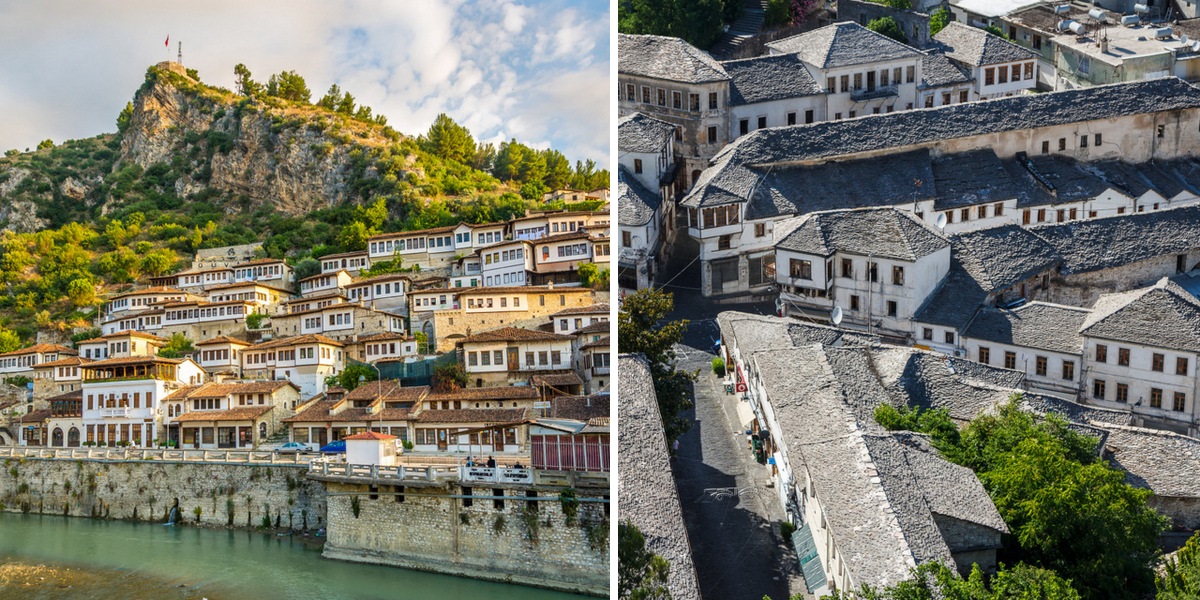Albania is a country with a rich cultural heritage that has been shaped by a long and complex history. The country’s strategic location on the Adriatic and Ionian seas has made it a crossroads of civilizations for centuries, and its rugged terrain has given rise to a distinct and unique cultural identity. Today, Albania is home to a number of UNESCO World Heritage sites that testify to the country’s rich cultural heritage and historical significance.
Butrint
One of Albania’s most famous UNESCO sites is Butrint, a city located on the southernmost tip of the country near the border with Greece. Butrint was an important center of the ancient Greek and Roman worlds, and its ruins are a testament to the city’s past glory. The site includes a number of impressive structures, including a well-preserved Roman theater, a basilica, a baptistery, and a forum. The city’s walls, which date back to the 4th century BC, are also still standing, and visitors can walk along them and enjoy views of the surrounding countryside.
Berat and Gjirokastra
Another of Albania’s UNESCO World Heritage sites is the historic city of Berat, which is situated in the central part of the country. The city is known for its distinctive architecture, which features a unique mix of Ottoman and European styles. The old town of Berat is particularly well-preserved, with a number of old houses and mosques dating back to the Ottoman period. The city’s castle, which dates back to the 13th century, is also a popular attraction and offers stunning views of the surrounding countryside.
Gjirokastra is another historic city that has been designated a UNESCO World Heritage site. Located in the southern part of the country, Gjirokastra is known for its unique architecture, with a style of stone construction. The old town of Gjirokastra is particularly well-preserved, with a number of old houses and shops that date back to the Ottoman period. The city’s castle, which dates back to the 12th century, is also a popular attraction and offers stunning views of the surrounding countryside.
The Historic Centers of Berat and Gjirokastra are excellent examples of Ottoman architecture and the way in which it developed over time in the Balkans. The way the cities are built and the way they are integrated into the landscape is a testament to the region’s long and complex history.
The ancient city of Apollonia
The ancient city of Apollonia is another UNESCO World Heritage site located in Albania. The city was founded by Greek colonists in the 6th century BC and was an important center of learning and culture in the ancient world. The city’s ruins are particularly well-preserved and include a number of impressive structures, including a temple to Apollo, a forum, and a number of public buildings. Visitors to Apollonia can also see the remains of an ancient theater and an impressive city wall that dates back to the 4th century BC.
The importance of Apollonia lies not only in its ruins but in the fact that it was a place of great importance for the spread of Greek culture in the Balkans. The fact that the city was also an important center of learning shows how it played a significant role in the intellectual life of the ancient world.
The Butrint National Park
The Butrint National Park is a unique UNESCO World Heritage site that includes not only the ancient city of Butrint but also a number of important ecosystems and natural habitats. The park is home to a number of endangered species, including the Dalmatian Pelican and the Egyptian Vulture, and is an important site for the conservation of
biodiversity in the region. Visitors to the park can enjoy a variety of outdoor activities, including hiking, birdwatching, and swimming in the park’s crystal-clear waters.
The park’s unique location and combination of cultural and natural heritage make it a must-see destination for any visitor to Albania. Its role in the conservation of the region’s biodiversity is particularly important, given the challenges facing the environment in the Balkans.
Conclusion
Albania’s UNESCO World Heritage sites are a testament to the country’s rich cultural heritage and historical significance. From the ancient city of Butrint to the historic cities of Berat and Gjirokastra, these sites offer a glimpse into the region’s long and complex history. The Butrint National Park is a unique destination that combines cultural and natural heritage in a way that is both educational and enjoyable. Whether you’re a history buff, a nature lover, or just someone looking for a unique and memorable travel experience, Albania’s UNESCO World Heritage sites offer something for everyone.



